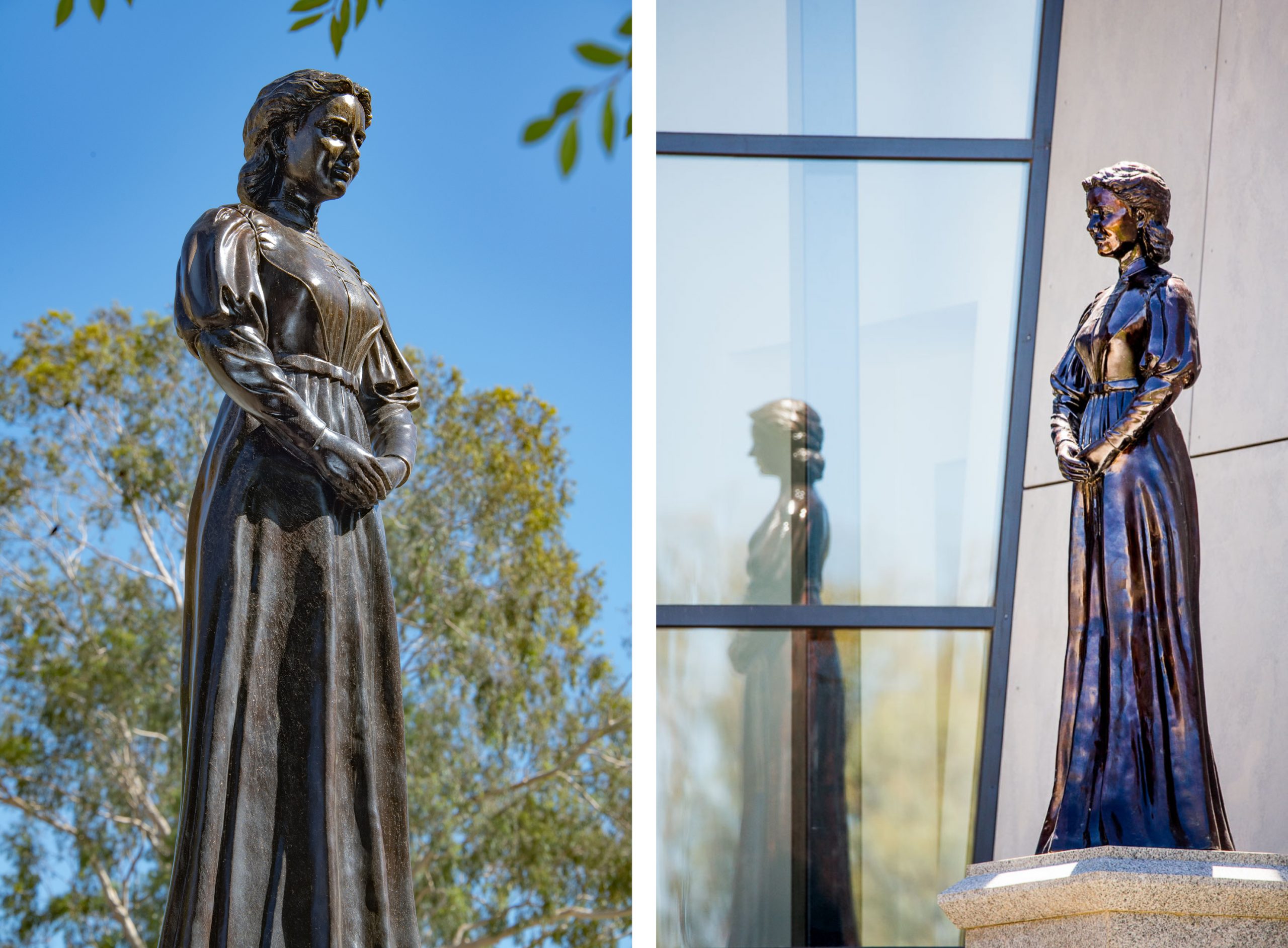Principal, Brian Turner has always recognised the importance of connection to the founding story of Mercy and embarked on a programme of works to create a visual Mercy presence throughout the buildings and grounds of both campuses of our College.
The pinnacle of his vision was to commission a life-size bronze statue of Catherine McAuley, founder of the Sisters of Mercy, to be installed on the upper balcony of the new Sr Aloysius Martyn Centre at the Coolock campus. The statue would signal to all who walk through the grounds that our College is a place of Mercy and that we are inspired by Catherine’s values and the charism of Mercy in all that we do. The statue was then replicated and installed beside the library at St Mary’s.
Carter & Co. was presented with the exciting challenge of creating this visual representation of Catherine. It was decided that the statue would be a traditional and historically accurate interpretation rather than an abstract work.
Carter & Co. was inspired to depict Catherine aged in her twenties when she went to live with William and Catherine Callaghan as a carer to the ailing Mrs Callaghan. In 1809 they moved to Coolock House, in the small village of Coolock located about 8km outside of Dublin city, where Catherine lived for the following two decades. The Callaghans bequeathed their entire estate to their ever-faithful companion and this legacy enabled Catherine to establish the House of Mercy in Baggot Street, Dublin.
As there were no portraits painted or drawn of Catherine in her life time, Carter & Co. relied heavily on written descriptions of Catherine from letters of those who had met her. Two quotes in particular were referenced. The first by Sr Teresa Mary White: ‘She was rather tall, 5’5”and had a queenly air’ and the second was from Sr Clare Augustine Moore,who described Catherine as ‘…dressed in black British merino which according to the fashion of the time fitted tight to her shape. She was remarkably well made, round but not in the least heavy. She had a good carriage; her hands were remarkably clumsy, very large with broad tips to the fingers and short square nails. She was very fair with a brilliant colour on her cheeks, still not too red. Her face was a short oval but the contour was perfect. Her lips were thin and her mouth rather wide, but there was so much play and expression about it that I remarked it as the next agreeable feature in her face. Her eyes were light blue and remarkably round with the brows and lashes colourless, but they spoke. Her nose was straight but thick. She wore bands made from her own back hair which were so well managed as to be quite free from the disagreeable look bands of this kind usually give. The colour was pale golden not in the least sandy, very fine and silky.’ (A Memoir of the Foundress of the Sisters of Mercy in Ireland [The Dublin Manuscript] as quoted in Mary C Sullivan, Catherine McAuley and the Tradition of Mercy).
Another inspiration for the statue came from one of Principal Turner’s favourite quotes from Catherine, ‘We should be shining lamps giving light to all around us’ (Retreat Instructions, Catherine McAuley). This quote has its origins in scripture when Luke in 8:16 says: ‘No one after lighting a lamp hides it under a jar, or puts it under a bed, but puts it on a lampstand, so that those who enter may see the light.’ The idea of ‘shining a light’ led to the incorporation of a lantern to the design based on the newly-installed gas lamps that lined the streets of Dublin at the time.
The production of the statue was an 18-month project involving the entire team at Carter & Co., from meticulously researching dress and hairstyles from the early 1820s to detailed life drawing sketches from every angle. Then using the latest technology, Carter & Co. created a 3D model from the intricate illustrations and worked closely with sculptor David Sho throughout the clay and wax processes used to create the final bronze.
The bronze statue is the exact height of Catherine standing at 167cm upon a solid marble plinth that is 1 metre high. Together, the statue and plinth weigh almost 2 tonne.
The statues of Catherine are a daily reminder that we are a place of Mercy and that we are inspired by Catherine’s values in all that we do. They invite all who pass by into an exploration of what Mercy looks like in our time and place, in our classrooms and in our school grounds. Who are the poor and needy in our world today? And they also invite us to respond to this need as Catherine did by ‘shining a light’ on injustice for those who are marginalised and the most vulnerable in our society.

Catherine McAuley statues at St Mary’s Campus (left) and Coolock Campus (right)

